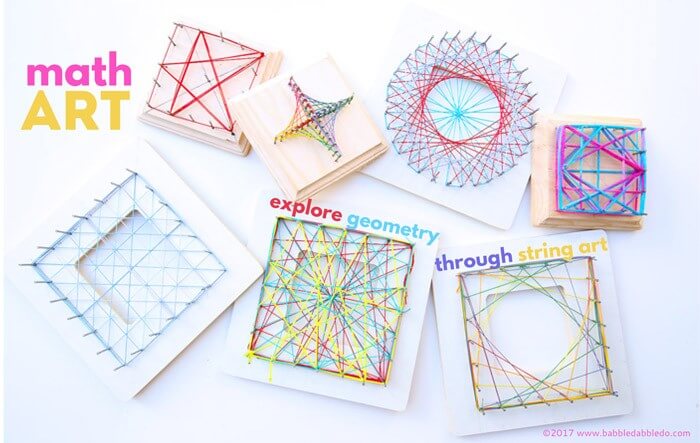Math anxiety is a real problem that affects many students worldwide. Students face math anxiety when they are unable to do or understand math, coupled with low self-confidence and stress when facing tests.
Math anxiety should be tackled from an early age, preventing it developing further into adulthood.
To prevent math anxiety, positive reinforcement is key, as well as other methods such as getting your child a tutor.
Another thing that’s proven effective in preventing math anxiety is simply making it fun.
When a subject is fun and engaging, students start to associate it with positive feelings and their confidence levels will naturally rise when they find they have some comprehension.
Today, schools, communities and individuals are finding ways to make math more engaging and fun to encourage interest in the subject, preventing many students from underperforming in the discipline.
Older methods of teaching math are being dropped to make way for newer ways, such as integrating the arts and using educational technology to make the subject more interactive and visual.
Creative ways to teach math take the subject away from the two-dimensional approach of using textbooks and blackboards, making it more tangible and hands-on.
Here are some great examples of how math can be fun for students:
Making it relatable
Part of why students find math difficult is because they perceive it as complex and ambiguous.
Simple math processes such as counting and subtraction make sense in the real world, but when students move on to higher processes such as trigonometry and algebra, they often lack understanding and find it hard to grasp.
It’s all in the approach, however, as one teacher has proven that ‘storytelling’ in math can actually make it more relatable for the student.
Award-winning mathematics teacher Eddie Woo from Australia, best known for his YouTube channel ‘Wootube’, where he has over half a million subscribers, explains complex maths in a simple yet engaging way, along with an enthuasiastic and upbeat approach.
His energy is infectious, as he said, “An enthusiastic teacher gets students excited and be more engaged.”
He also said, “I don’t teach a subject, I teach students. It really matters that you can’t just be an expert in mathematics. You also have to be an expert in children.”
Woo urges his students to ask themselves what they are interested in, and then find a way to connect it to mathematics.
“I always asks students, and no matter what answers they give – be it sports, finance, cooking or science – I can find a connection to mathematics. Suddenly, they realise mathematics is connected to them.”
He believes that human beings are natural storytellers, and they should leverage on that in the classroom.
Human beings are natural storytellers. Sometimes, we don’t take a story approach to mathematics, much to our own detriment. People don’t realise it’s a great way to engage people to learn the subject.
In a similar vein, a teacher in Uganda managed to spur interest in his Primary Six math class at St Charles Lwanga Kyotera Primary School by incorporating music in his lessons to make it more relatable.
Sennono Mwanj composed over 40 songs relating to Math topics after realising that pupils learnt best when teaching methods related learning topics to everyday activities.
Former pupil Jimmy Walugembe, who now works as a statistician, said, “While [I was] a student at St Cecilia, Mathematics had become the most difficult subject for me until Sennono was recruited and started teaching us using music.”
Sennono said that a teacher should be creative and develop ways of motivating his pupils, and that for them to love mathematics, they should see the teacher as an entertainer using activities within their environment such as stories and songs as a guide.
Teachers can also use games, puzzles and classroom competitions to teach math concepts in class. It may seem like playtime but they are actually learning new things without even realising.
Integrating the arts
Another way to make math come to life for young learners is to use art forms such as drawing, painting, and sculpting.
This way, they are engaged with the task and able to grasp the material presented to them in creative forms.
Artlight Global was founded in 2017, connecting two different disciplines to help students succeed in math.
It started at a Southeast-Asian Fulbright Conference in Jaipur, India, in early 2016, where the three founders realised they shared common interests in using art integration as a mechanism for deeper understanding and learning math concepts.
When they returned to the US, they developed the organisation dedicated to providing arts-integrated workshops in math to students worldwide who would benefit most.
Their workshops help students better conceptualize and understand mathematics concepts, such as ratios, fractions or geometry, through art.
The website says, “Art is the catalyst that provides students with a variety of hands-on experiences to practice skills that encourage understanding of new material and reinforce familiar mathematics concepts such as ratios through fractions, proportion and scale.
“By combining mathematics and art in these activities, the workshops will also encourage a collaborative environment were students work together to find solutions and meaning by building a stronger community through trust and empathy.”
For example, students can be asked to draw concepts instead of memorising the rules, which can be hard to understand.
Patricia Hall Jones, a teacher from Georgia, US, started a blog many years ago where she advocated for the importance of art in education.
Over the course of a teaching career spanning 35 years, she has developed several strategies which she shares in her blog, Teacher Support Force.
Here, she shares examples of how she introduces art in the classroom to help her students learn math.
She wrote “To check students’ comprehension of the terms “acute” and “obtuse,” for instance, I asked them to draw two “Angle Animals” in their habitats with the mouth of one formed by an acute angle and the mouth of the other formed by an obtuse angle.
“The results of this assignment were absolutely breathtaking, and I discovered some unbelievably talented artists. ”
Arts integration is becoming popular in schools in countries like the US, and there are plenty of resources for teachers who want to try incorporating them in the classroom.

Teachers can integrate the arts into math in so many ways, such as asking them to draw shapes and lines to understand geometry, or painting a ‘wall clock’ to understand the concept of time, or even learning ratios through mixing paint.
By doing so, teachers make math fun and visually appealing, sparking interest in kids and getting them engaged in class.
Source: Study International


